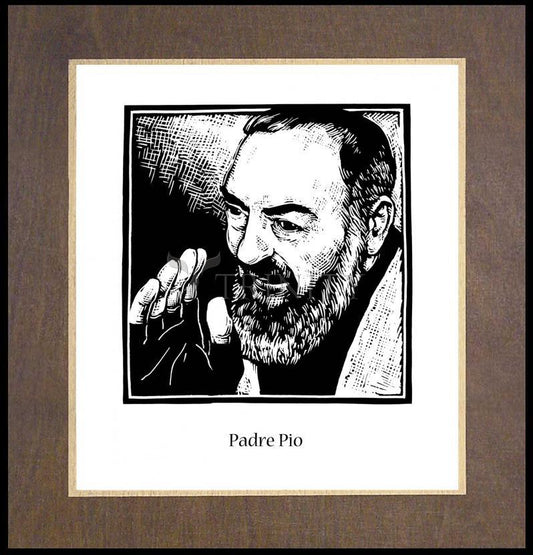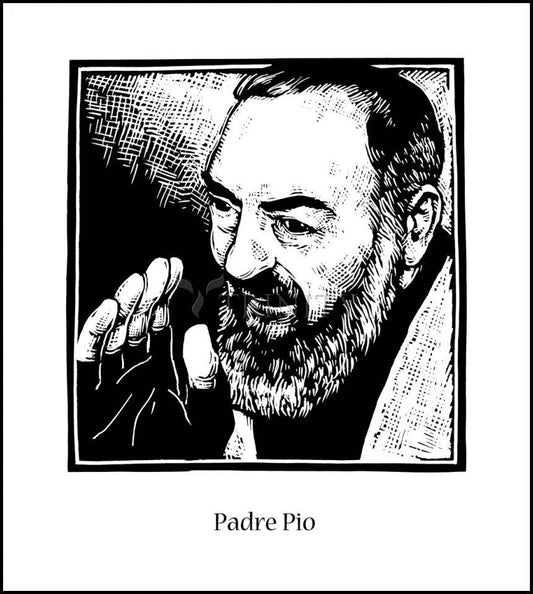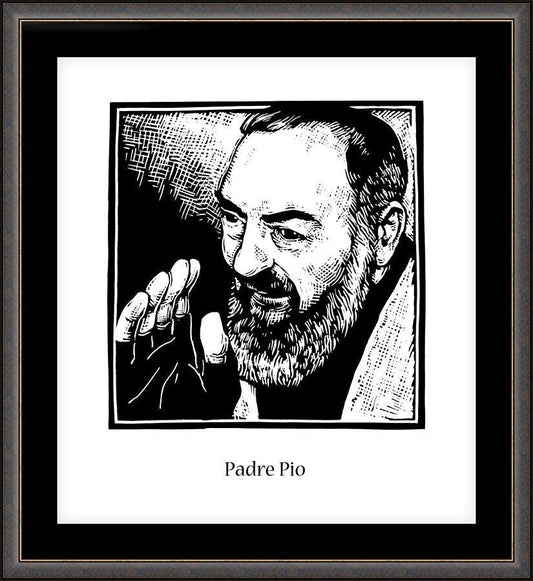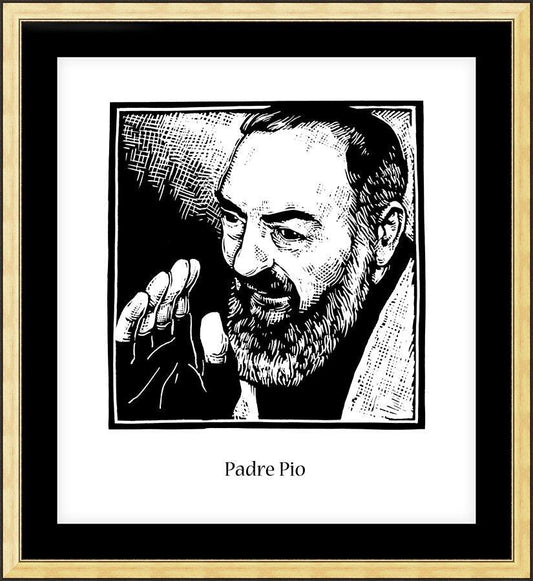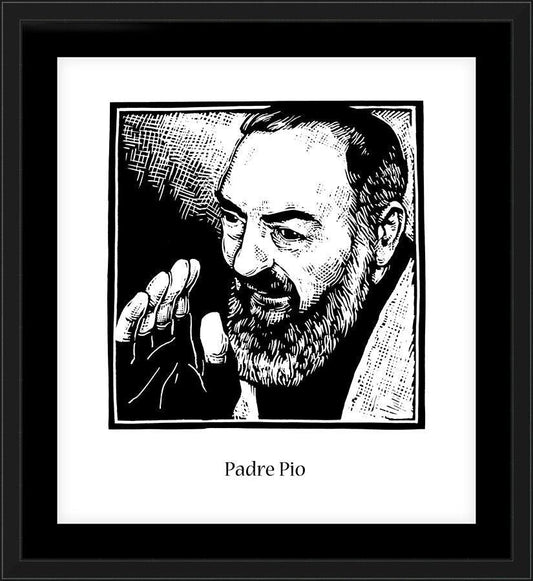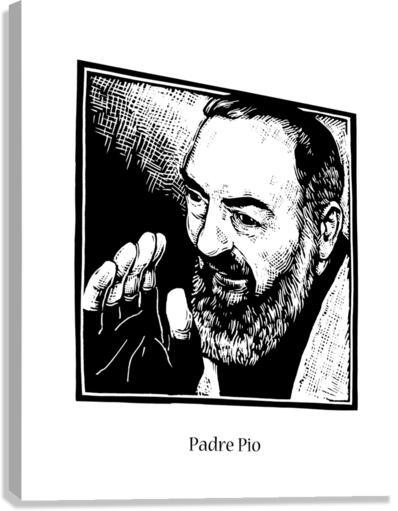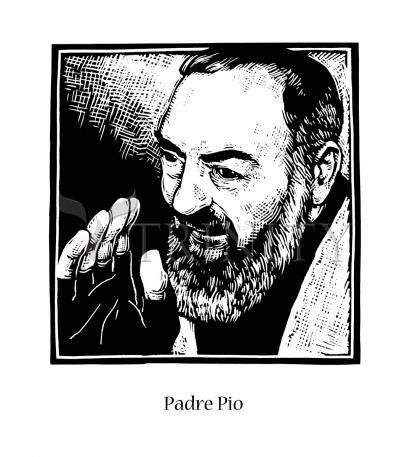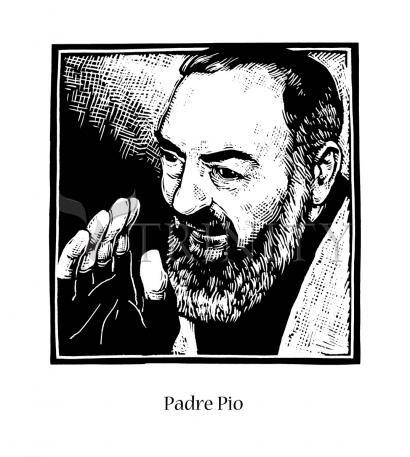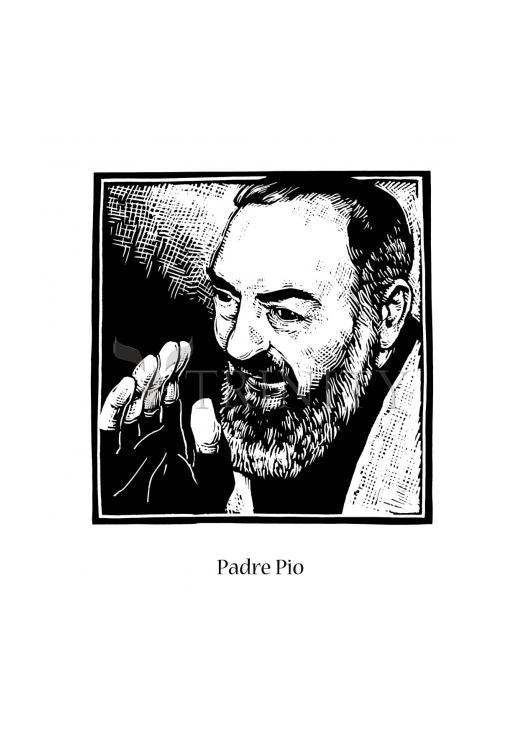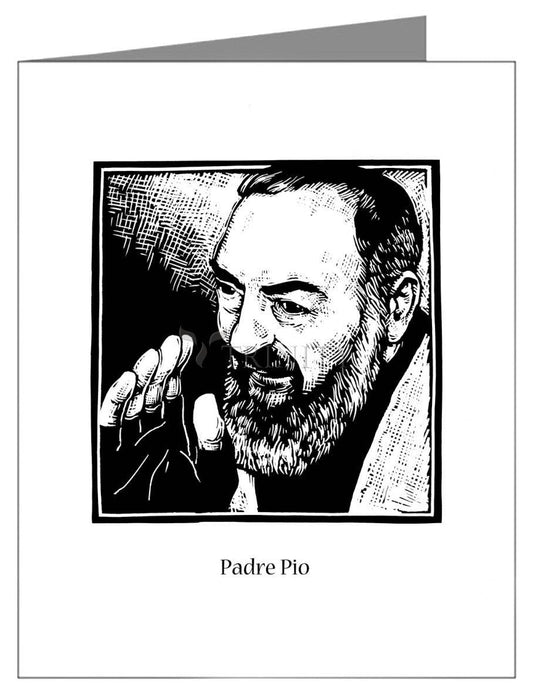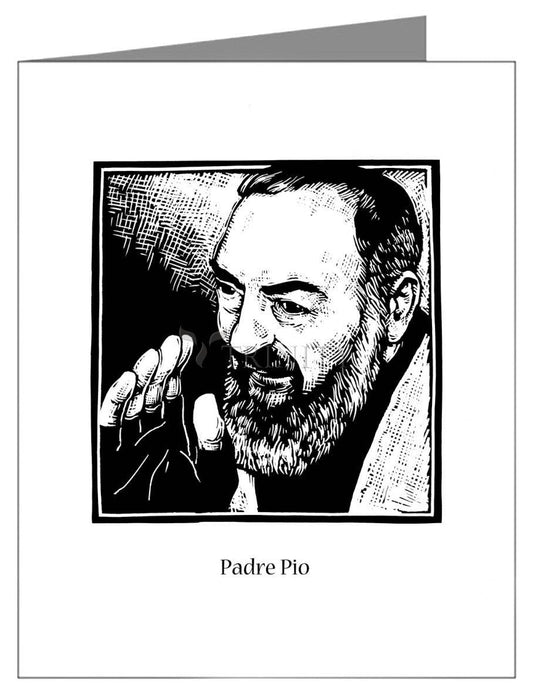Pio of Pietrelcina (Italian: Pio da Pietrelcina), O.F.M. Cap. commonly known as Padre Pio, (May 25, 1887 " September 23, 1968) was a friar, priest, stigmatist and mystic of the Roman Catholic Order of Friars Minor Capuchin. Padre Pio became famous for bearing the stigmata for most of his life. This condition generated much interest and controversy around him. He is now venerated as a saint in the Catholic Church.
Pio was born Francesco Forgione, and given the name of Pius (Italian: Pio) when he joined the Capuchins. After his beatification in 1999, he was canonized by Pope John Paul II on June 16, 2002.
Early life
Francesco Forgione was born to Grazio Mario Forgione (1860"1946) and Maria Giuseppa Di Nunzio Forgione (1859"1929) on May 25, 1887, in Pietrelcina, a farming town in the southern Italian region of Campania. His parents made a living as peasant farmers. He was baptized in the nearby Santa Anna Chapel, which stands upon the walls of a castle. He later served as an altar boy in this same chapel. His siblings were an older brother, Michele, and three younger sisters, Felicita, Pellegrina, and Grazia (who was later to become a Bridgettine nun). His parents had two other children who died in infancy. When he was baptized, he was given the name Francesco. He stated that by the time he was five years old, he had already made the decision to dedicate his entire life to God. He began taking on penances and was chided on one occasion by his mother for using a stone as a pillow and sleeping on the stone floor. He worked on the land up to the age of 10, looking after the small flock of sheep the family owned. This delayed his education to some extent.
Pietrelcina was a town where feast days of saints were celebrated throughout the year, and the Forgione family was deeply religious. They attended daily Mass, prayed the Rosary nightly, and abstained from meat three days a week in honor of Our Lady of Mount Carmel. Although Francesco's parents and grandparents were illiterate, they memorized the Scriptures and narrated Bible stories to their children. His mother said Francesco was able to see and speak with Jesus, the Virgin Mary, and his guardian angel, and that as a child, he assumed that all people could do so.
According to the diary of Father Agostino da San Marco, who was his spiritual director in San Marco in Lamis, the young Francesco Forgione was afflicted with a number of illnesses. At six he suffered from a grave gastroenteritis, which kept him bedridden for a long time. At ten he caught typhoid fever.
As a youth, Francesco reported that he had experienced heavenly visions and ecstasies. In 1897, after he had completed three years at the public school, Francesco was drawn to the life of a friar after listening to a young Capuchin friar who was in the countryside seeking donations. When Francesco expressed his desire to his parents, they made a trip to Morcone, a community 13 miles (21 km) north of Pietrelcina, to find out if their son was eligible to enter the Capuchin Order. The friars there informed them that they were interested in accepting Francesco into their community, but he needed more education.
Francesco's father went to the United States in search of work to pay for private tutoring for his son, so that he might meet the academic requirements to enter the Capuchin Order. It was in this period that Francesco received the sacrament of Confirmation on September 27, 1899. He underwent private tutoring and passed the stipulated academic requirements. On January 6, 1903, at the age of 15, he entered the novitiate of the Capuchin friars at Morcone. On January 22, he took the Franciscan habit and the name of Fra (Friar) Pio, in honor of Pope St. Pius I, whose relic is preserved in the Santa Anna Chapel in Pietrelcina. He took the simple vows of poverty, chastity and obedience.
Priesthood
Commencing his seven-year study for the priesthood, Fra Pio traveled to the friary of St. Francis of Assisi by oxcart. At 17, he suddenly fell ill, complaining of loss of appetite, insomnia, exhaustion, fainting spells, and terrible migraines. He vomited frequently and could digest only milk and cheese. The hagiographers say that it was during this time, together with his physical illness, that inexplicable phenomena began to occur. According to their stories, monks heard strange noises coming from his room at night " sometimes screams or roars. During prayer, Brother Pio appeared to be in a stupor, as if he were absent. One of Pio's fellow friars claims to have seen him in ecstasy, levitating above the ground.
In June 1905, Fra Pio's health was so weak that his superiors decided to send him to a mountain convent, in the hope that the change of air would do him some good. His health worsened, however, and doctors advised that he return to his home town. But, even there, his health continued to worsen. On January 27, 1907, he still made his solemn profession.
In 1910, Brother Pio was ordained a priest by Archbishop Paolo Schinosi at the Cathedral of Benevento. Four days later, he offered his first Mass at the parish church of Our Lady of the Angels. His health being precarious, he was permitted to remain with his family until 1916 while still retaining the Capuchin habit.
On September 4, 1916, Padre Pio was ordered to return to his community life. He moved to an agricultural community, Our Lady of Grace Capuchin Friary, located in the Gargano Mountains in San Giovanni Rotondo in Foggia. At that time with Father Pius, the community numbered seven friars. He stayed at San Giovanni Rotondo until his death in 1968, except for military service. Padre Pio celebrated the Mass in Latin.
Military service
When World War I started, four friars from this community were selected for military service. At that time, Padre Pio was a teacher at the seminary and a spiritual director. When one more friar was called into service, Padre Pio was put in charge of the community. On November 15, 1915, he was drafted into the Italian army and on December 6, assigned to the 10th Medical Corps in Naples. Due to poor health, he was continually discharged and recalled until on March 16, 1918, he was declared unfit for military service and discharged. In all, his military service lasted 182 days.
Stigmata
On September 20, 1918, while hearing confessions, Padre Pio had his first occurrence of the stigmata: bodily marks, pain, and bleeding in locations corresponding to the crucifixion wounds of Jesus Christ. This phenomenon continued for fifty years, until the end of his life. The blood flowing from the stigmata smelled of perfume or flowers, a phenomenon mentioned in stories of the lives of several saints and often referred to as the odour of sanctity. Though Padre Pio would have preferred to suffer in secret, by early 1919, news about the stigmatic friar began to spread in the secular world. Padre Pio's wounds were examined by many people, including physicians.
People who had started rebuilding their lives after World War I, began to see in Padre Pio a symbol of hope. Those close to him attest that he began to manifest several spiritual gifts, including the gifts of healing, bilocation, levitation, prophecy, miracles, extraordinary abstinence from both sleep and nourishment (one account states that Padre Agostino recorded one instance in which Padre Pio was able to subsist for at least 20 days at Verafeno on only the Eucharist without any other nourishment), the ability to read hearts, the gift of tongues, the gift of conversions, and the fragrance from his wounds.
His stigmata, regarded as evidence of holiness, were studied by physicians whose independence from the Church is not known. The observations were unexplainable and the wounds never became infected. His wounds healed once but reappeared. They were examined by Luigi Romanelli, chief physician of the City Hospital of Barletta, for about one year. Dr. Giorgio Festa, a private practitioner, also examined them in 1920 and 1925. Professor Giuseppe Bastianelli, physician to Pope Benedict XV, agreed that the wounds existed but made no other comment. Pathologist Dr. Amico Bignami of the University of Rome also observed the wounds but could make no diagnosis. Both Bignami and Dr. Giuseppe Sala commented on the unusually smooth edges of the wounds and lack of edema. Dr. Alberto Caserta took x-rays of Padre Pio's hands in 1954 and found no abnormality in the bone structure.
He was said to be embarrassed by this condition and most photographs show him wearing red mittens or black coverings on his hands and feet where the bleeding occurred. At the time of Padre Pio's death, his body appeared unwounded, with no sign of scarring. There was a report that doctors who examined his body found it empty of all blood.
There were both religious and non-religious critics who accused Padre Pio of faking his stigmata, saying he used carbolic acid to make the wounds. In 2007, The Telegraph reported on the book, The Other Christ: Padre Pio and 19th Century Italy, by the historian Sergio Luzzatto. He recounted that in 1919, according to one document in the Vatican's archive, Padre Pio requested carbolic acid from a pharmacist. She said it was for sterilization. The Catholic Anti-Defamation League said Luzzatto was spreading "anti-Catholic libels" and needed to learn more about religion.
The Church did not find this a problem and dismissed charges that he had faked the stigmata. "The boys had needed injections to fight the Spanish Flu which was raging at that time. Due to a shortage of doctors, Padres Paolino and Pio administered the shots, using carbolic acid as a sterilizing agent."
Born: May 25, 1887 at Pietrelcina, Benevento, Italy as Francesco Forgione
Died: September 23, 1968 of natural causes
Venerable: December 18, 1997 by Saint John Paul II
Beatified: May 2, 1999 by Saint John Paul II
Canonized: June 16, 2002 by Saint John Paul II at Rome, Italy



